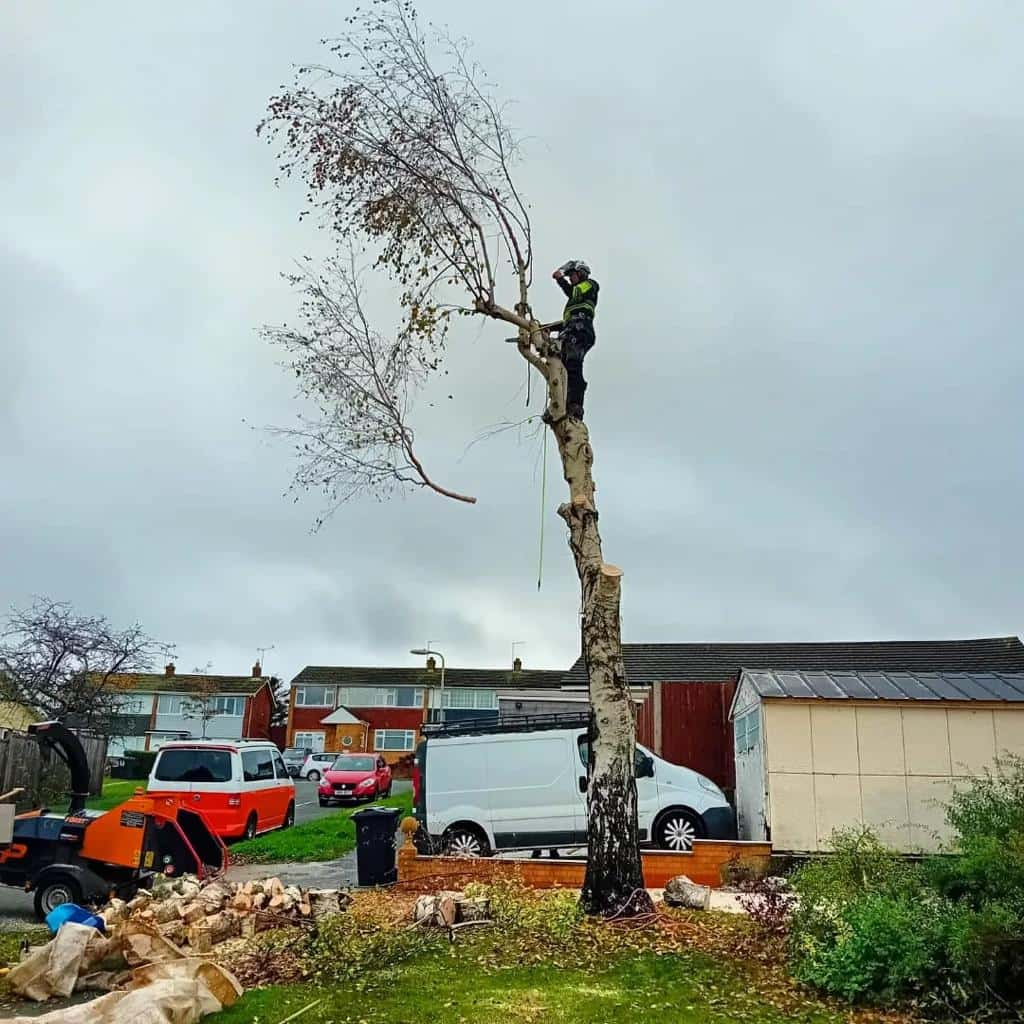Tree care requires both precision and understanding. One of the most effective and responsible ways to manage a tree’s growth while ensuring its health and safety is through crown reduction. This professional technique focuses on carefully cutting back branches to reduce the overall size and weight of the canopy without harming the tree’s structure. At LM Tree Surgery Liphook, we often recommend crown reduction for clients in Liphook, Hampshire who want to maintain their trees safely and sustainably, rather than opting for more drastic measures like full removal.
Understanding Crown Reduction
Crown reduction involves selectively trimming the outer portions of a tree’s crown — usually its upper branches — to decrease height and spread. The process targets specific growth points, ensuring the natural shape and health of the tree are maintained. Unlike topping, which removes large sections of the crown indiscriminately, crown reduction is performed with precision and care to protect the tree’s long-term stability.
This method is suitable for many situations, including:
- Trees growing too close to buildings or power lines.
- Overextended branches that could break in high winds.
- Mature trees needing structural balance.
- Reducing shading or allowing more light to reach surrounding plants.
The Dangers of Improper Tree Cutting
Some property owners mistakenly believe that simply cutting off the top of a tree (a process known as “topping”) is the easiest way to reduce its height. However, this can severely damage the tree. Topping removes too much foliage at once, disrupting the tree’s natural ability to photosynthesise and produce food. It also leaves large open wounds that invite disease, decay, and pests.
In contrast, crown reduction minimises stress on the tree by using targeted pruning cuts. This preserves the tree’s natural defences and allows it to heal more effectively.
Benefits of Crown Reduction
1. Promotes Long-Term Tree Health
Crown reduction supports healthy regrowth by encouraging the tree to develop strong, balanced branches. By removing only specific limbs, the process reduces strain on weaker areas while maintaining essential leaf coverage.
2. Enhances Safety
Overgrown or heavy branches can pose a real hazard, especially during storms or high winds. Crown reduction lessens the weight load and wind resistance on the tree, reducing the likelihood of falling branches or structural failure. This makes your property and surroundings significantly safer.
3. Improves Appearance and Structure
A carefully reduced crown keeps your tree looking natural and well-proportioned. Professional tree surgeons like LM Tree Surgery Liphook shape the tree with an eye for aesthetics as well as safety, ensuring it remains a focal point of your garden rather than an overgrown risk.
4. Allows More Light and Air Circulation
Dense canopies can block sunlight and trap moisture, creating a humid environment that encourages fungal growth. Crown reduction opens up the canopy, allowing sunlight and air to circulate freely — improving the health of both the tree and the surrounding landscape.
5. Prevents Unnecessary Tree Removal
Crown reduction can often save a tree that might otherwise need to be removed due to size or safety concerns. By maintaining a manageable shape and structure, it allows trees to coexist safely with nearby buildings, fences, and gardens.
When to Consider Crown Reduction
Crown reduction is best carried out by professional tree surgeons who can evaluate the tree’s health, species, and surroundings. Signs that it may be time for a crown reduction include:
- Branches encroaching on power lines, roofs, or neighbouring properties.
- Noticeable leaning or imbalance in the crown structure.
- Excessive shading of gardens or windows.
- Dead or damaged branches at the upper canopy.
Each tree is unique, and the appropriate level of reduction must be determined carefully. At LM Tree Surgery Liphook, we assess each case individually to ensure that the tree remains strong, stable, and attractive after the work is done.
Professional Techniques That Protect Your Trees
Our team uses industry-approved pruning methods that prioritise the health of the tree. Every cut is made just above a healthy growth point to promote proper healing and natural regrowth. Tools are sanitised between trees to prevent the spread of disease, and cuts are made with precision to avoid unnecessary stress or tearing.
We also consider seasonal factors — certain species respond best when pruned at specific times of year. For example, winter pruning often minimises sap loss, while summer reductions help control vigorous growth.
Why Choose Crown Reduction Over Topping
To the untrained eye, topping and crown reduction might seem similar, but the results could not be more different. Topping leaves trees disfigured, unhealthy, and vulnerable to decay. Crown reduction, on the other hand, enhances both safety and beauty.
Key differences include:
- Crown reduction preserves structure and encourages healthy regrowth.
- Topping removes vital branches and causes long-term harm.
- Crown reduction balances safety with natural aesthetics.
- Topping creates weak, fast-growing shoots that are prone to breaking.
By choosing crown reduction from professionals like LM Tree Surgery Liphook, you’re investing in the longevity of your trees and the overall appeal of your landscape.
Conclusion
Crown reduction is a careful, precise, and environmentally responsible way to manage tree growth without sacrificing health or beauty. It strengthens the tree’s structure, reduces hazards, and prevents unnecessary removal — making it the smarter choice for both property owners and the environment. For expert crown reduction and comprehensive tree care in Liphook, Hampshire, the experienced team at LM Tree Surgery Liphook ensures your trees remain safe, healthy, and beautifully maintained all year round.
Call us on: 01428 770 498
Click here to find out more about LM Tree Surgery Liphook
Click here to complete our contact form and see how we can help with your tree needs.

